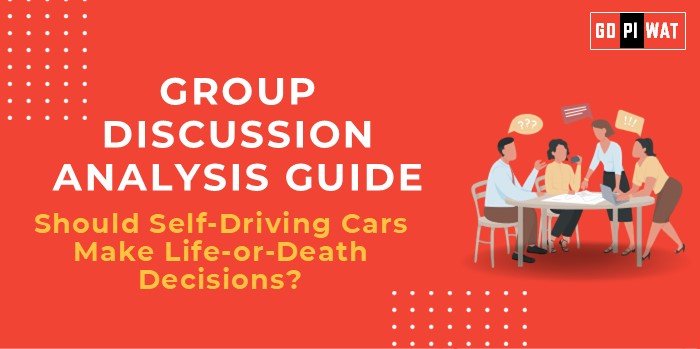📋 Group Discussion Analysis Guide: Should Self-Driving Cars Make Life-or-Death Decisions?
🌐 Introduction to the Topic
Opening Context: Self-driving cars represent a revolutionary step in technology and transportation. With advancements in artificial intelligence, these vehicles can now operate without human intervention, raising critical ethical and philosophical dilemmas.
Topic Background: The crux of the debate lies in programming these cars to handle situations where life-or-death decisions are unavoidable, such as in accidents. This dilemma, often referred to as the “trolley problem,” forces us to consider moral responsibility and decision-making authority in autonomous systems.
📊 Quick Facts and Key Statistics
- 🚗 Projected Market Size: $173.15 billion by 2028 – showcasing the rapid adoption of autonomous vehicles.
- 🌍 Global Autonomous Vehicles in Use: 1.4 million (2023) – highlighting increasing real-world implications.
- ⚠️ Accident Reduction Potential: 90% of traffic accidents are attributed to human error, which self-driving cars aim to eliminate.
- 📊 Public Opinion: 44% of Americans are uncomfortable with autonomous cars making moral decisions (Pew Research 2022).
- 🧠 Ethics in Programming: Studies show only 12% of AI developers feel confident about ethical programming for life-and-death scenarios.
👥 Stakeholders and Their Roles
- 💻 Tech Companies: Develop AI algorithms to navigate moral dilemmas.
- 🏛️ Government and Regulators: Establish legal frameworks for responsibility and safety.
- 📜 Ethicists and Philosophers: Provide guidance on moral programming decisions.
- 🚙 Consumers: Influence the market through acceptance or rejection.
- 📋 Insurance Companies: Define liability in autonomous vehicle accidents.
🏆 Achievements and Challenges
✨ Achievements:
- ✔️ Reduction in Road Fatalities: Due to AI’s precision.
- 🧓 Increased Accessibility: For the elderly and disabled.
- 📚 Advancements in Ethical AI Research: Promoting global debates.
⚠️ Challenges:
- ⚖️ Lack of Universal Ethical Standards: For programming life-and-death scenarios.
- 🌏 Cultural Differences: In moral decisions (e.g., collectivism vs. individualism).
- 🔒 Public Trust Deficit: And privacy concerns regarding AI decision-making.
💬 Structured Arguments for Discussion
- ✔️ Supporting Stance: “Autonomous vehicles can eliminate human error and save lives, making their use inevitable despite moral complexities.”
- ❌ Opposing Stance: “Allowing AI to make life-or-death decisions undermines human values and creates liability loopholes.”
- ⚖️ Balanced Perspective: “While the potential benefits of self-driving cars are significant, ethical frameworks and public trust must evolve in tandem.”
🛠️ Effective Discussion Approaches
- 🎯 Opening Approaches:
- 📖 “A self-driving car facing a life-or-death scenario poses questions as old as philosophy but as urgent as tomorrow’s commute.”
- 📊 “With road fatalities potentially reduced by 90%, is programming morality into cars worth the risk?”
- 🔄 Counter-Argument Handling:
- Acknowledge technological benefits but stress the need for societal consensus.
- Discuss case studies like Germany’s ethical guidelines for self-driving cars.
🔍 Strategic Analysis: SWOT
- 💪 Strengths: Improved safety, increased efficiency, and accessibility.
- ⚡ Weaknesses: Ethical ambiguity, liability concerns.
- 🌟 Opportunities: Global leadership in ethical AI development.
- ⚔️ Threats: Public mistrust, misuse of AI systems.
📚 Connecting with B-School Applications
- 🌍 Real-World Applications: Topics like ethical AI in operations or leadership ethics projects.
- ❓ Sample Interview Questions:
- “Should technology always prioritize human lives equally?”
- “How would you balance innovation and ethics in AI?”
- 💡 Insights for Students:
- Consider frameworks like Kantian ethics or utilitarianism for decision-making.
- Link ethical challenges to business strategy and risk management.


